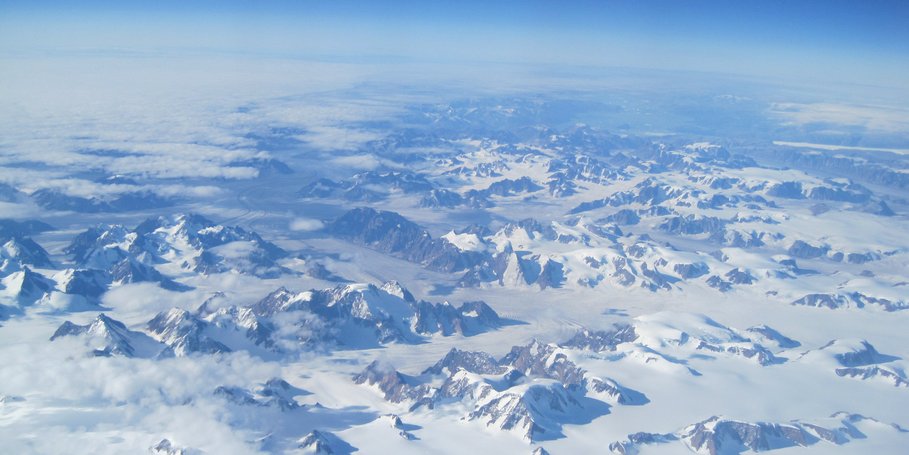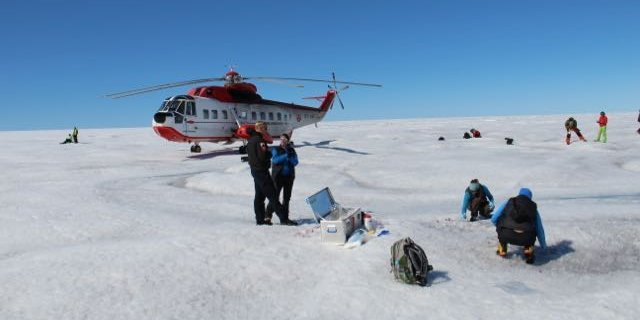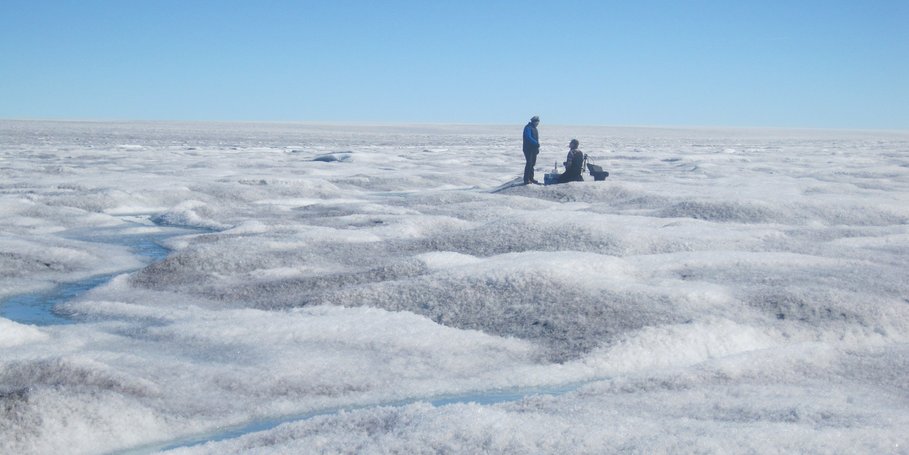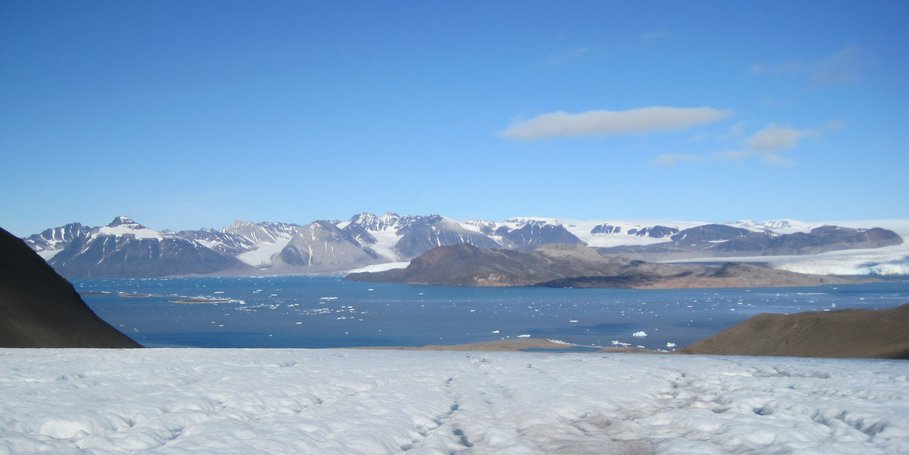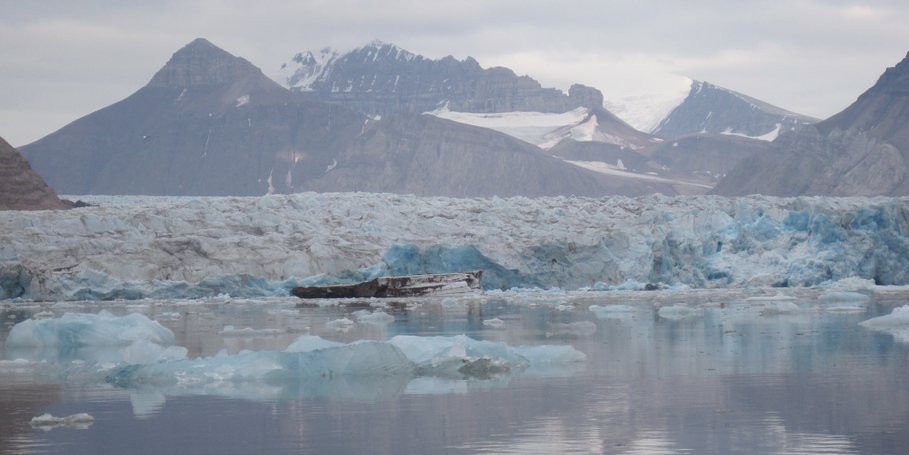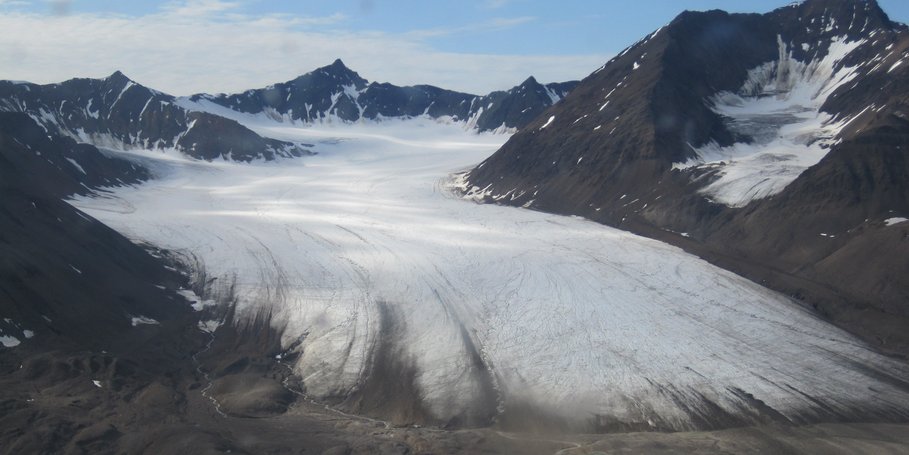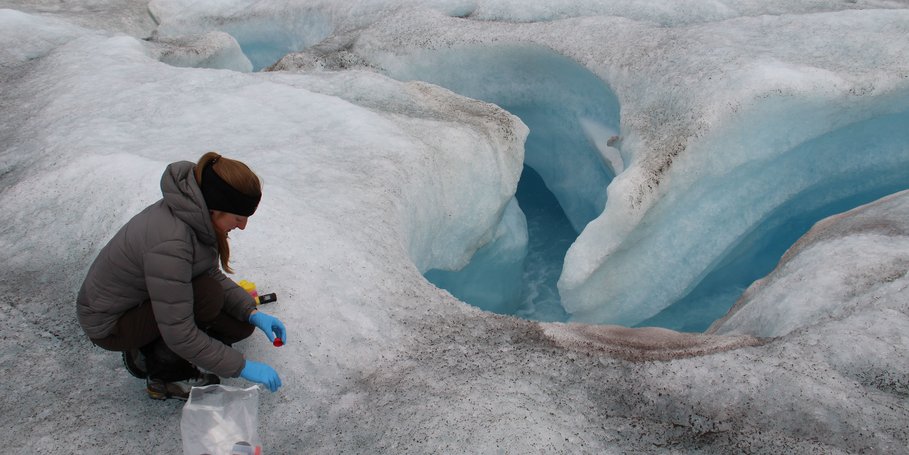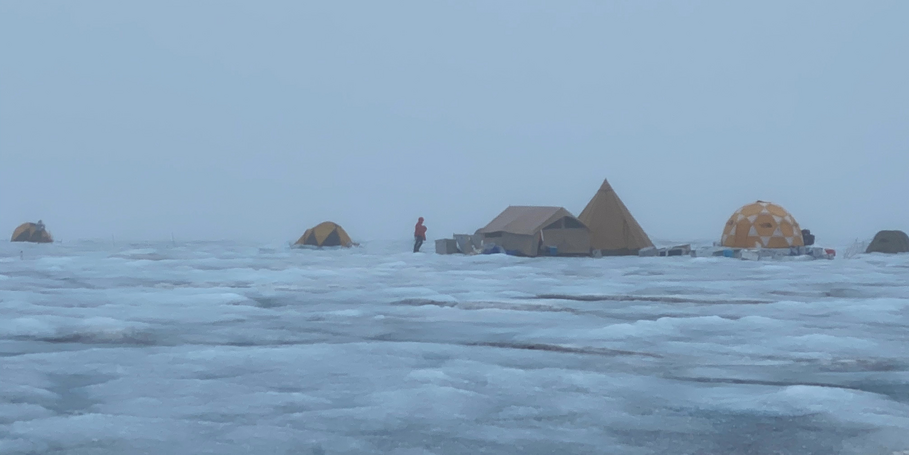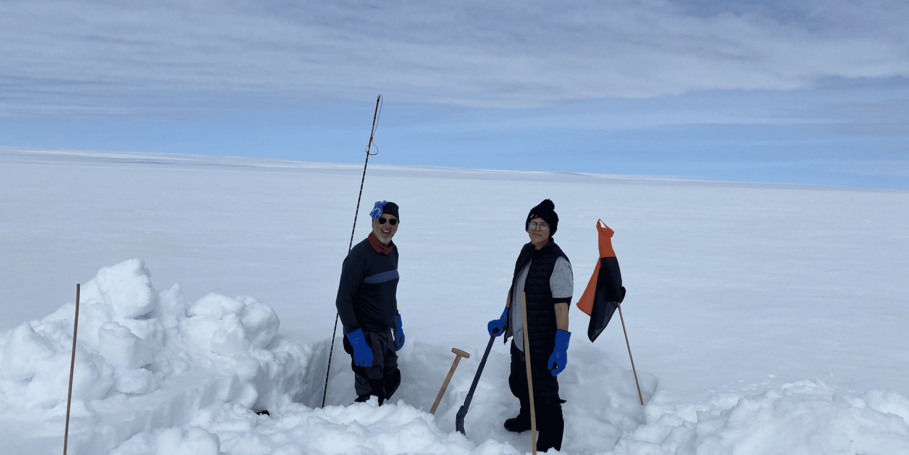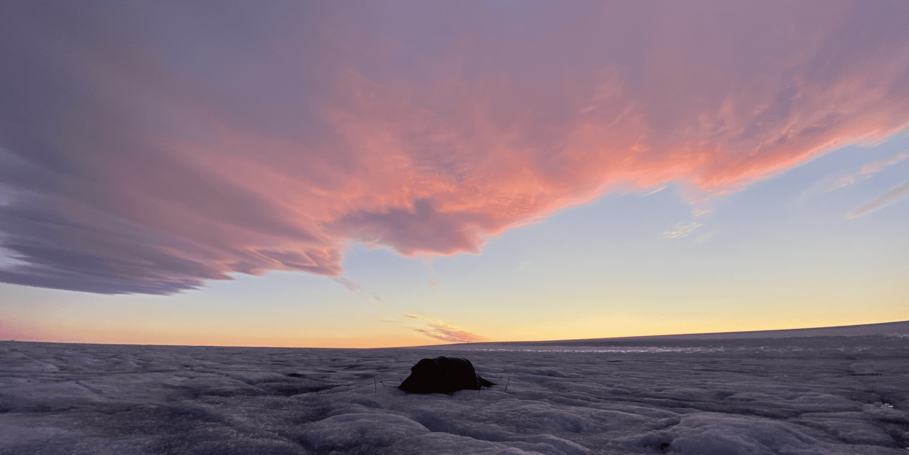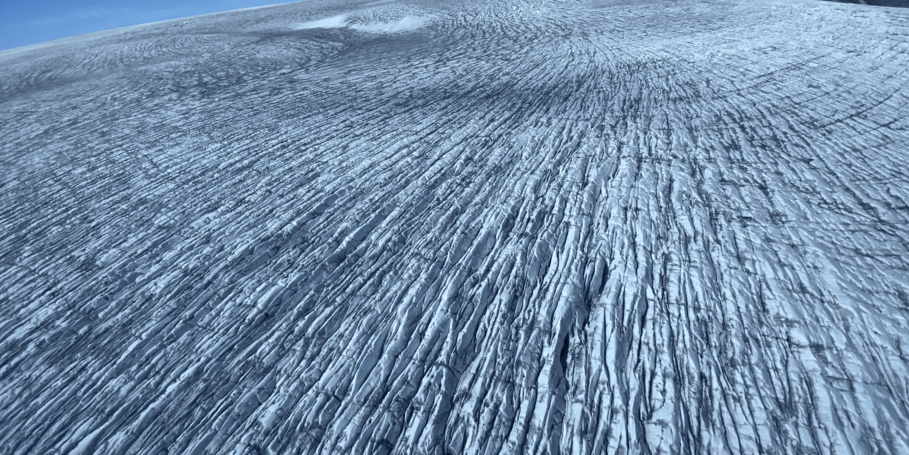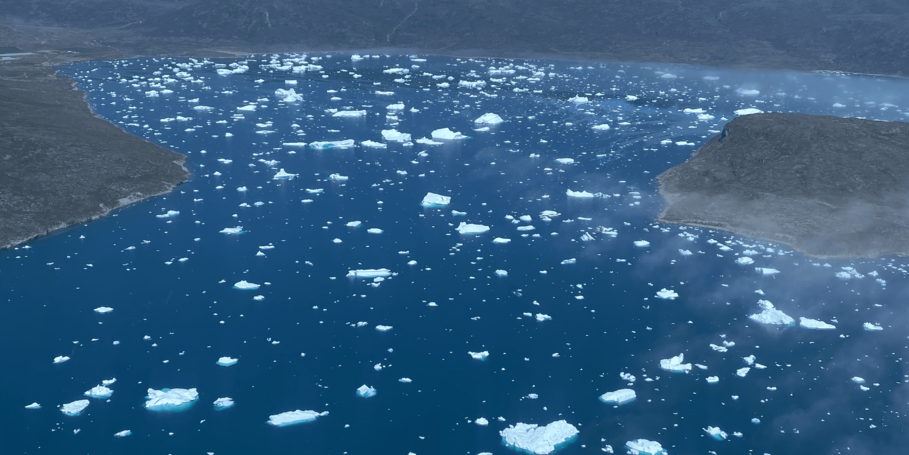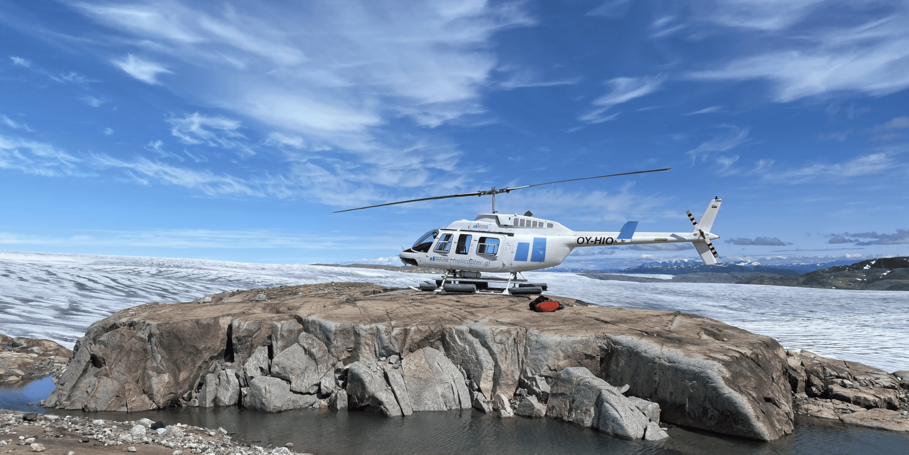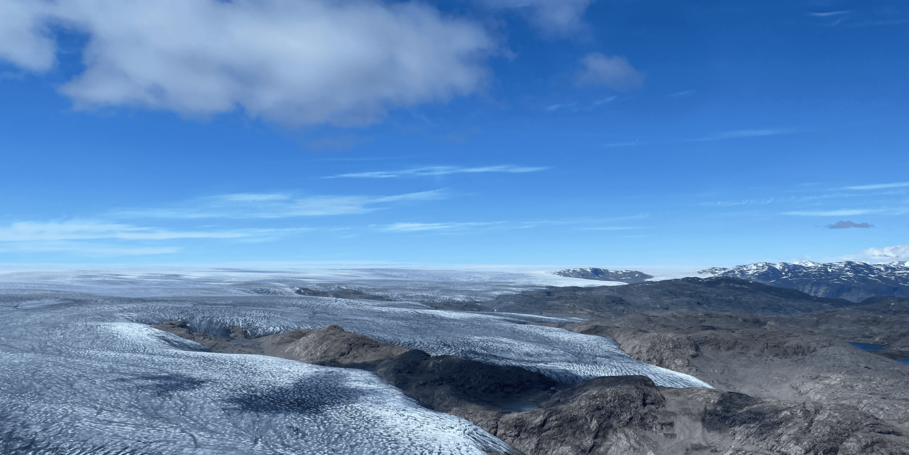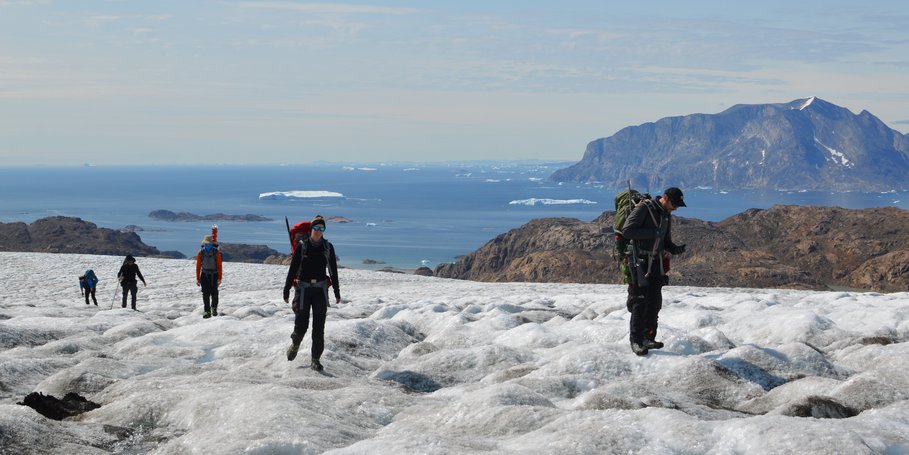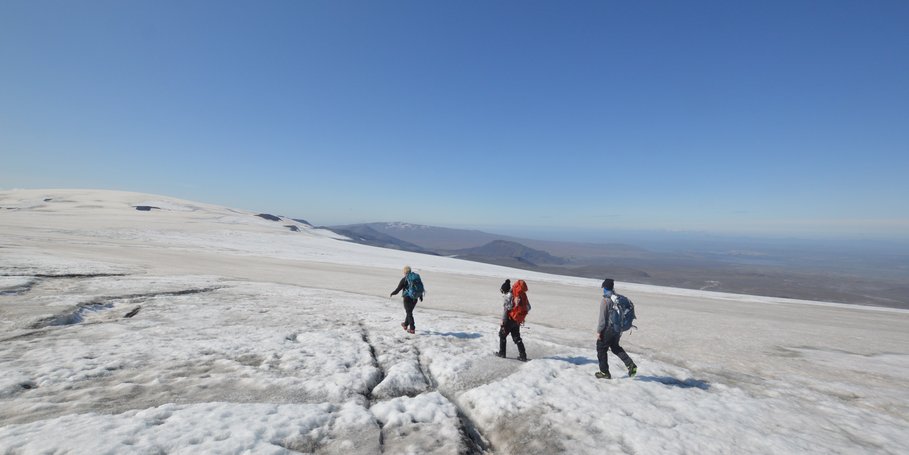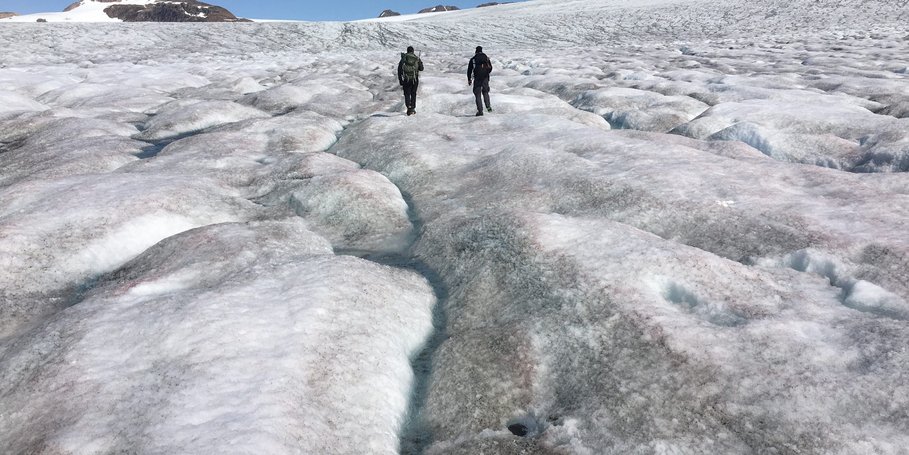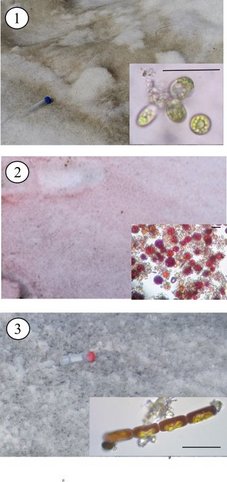The main primary producers on snow and ice surfaces are snow and ice algae, respectively. They are poly-extremophilic microalgae, which have evolved a range of adaptations to low temperature environments including the freezing of water, desiccation, nutrient deficiencies, and high light irradiation. In order to protect their photosystematic apparatus from photoinhibition, they produce a range of pigments, which cause distinct colourations of the snow and ice (e.g., green, red, brown, black). Together with other impurities (e.g., dust, minerals, black carbon), these algal-derived pigments cause a darkening of the snow and ice surfaces, which in turn decreases albedo and increases melt rates in glacial ecosystems.
Yet, the biogeographic distribution patterns, their biodiversity and the biochemical strategies are still poorly understood. In order to get a better understanding, we are evaluating snow and ice algal communities, and their associated microbiome (i.e., bacteria, archaea, fungi), in various Arctic and Alpine settings by using a multi-disciplinary approach. We are working to reveal community compositions and dynamics by using next generation sequencing technologies including targeted marker gene, shotgun metagenome, and RNA sequencing. The molecular data are then cross-correlated with the physico-chemical (e.g., pH) and geochemical (e.g., nutrients, trace metals) boundary conditions to paint a more complete picture of microbial ecosystem dynamics. Additionally, we are implementing a metabolomics approach to understand how microbial metabolisms can adapt, change, and respond to changing environmental conditions.
This work is carried out in collaboration with the cryo-micro team led by Alex Anesio at Aarhus University Roskilde.
Completed Dissertation
Mourot, R. (2024): Ecology of supraglacial microbial communities, PhD Thesis, Berlin : Freie Universität Berlin, xxxviii, 338 p. https://doi.org/10.17169/refubium-44530
Recent Publications
(authors from the group in bold)
Ciftci, O., Zervas, A., Lutz, S., Feord, H., Keusching, C., Leya, T., Tranter, M., Anesio, A. M., Benning, L.G. (2024): Long-read based hybrid genome assembly and annotation of snow algal strain CCCryo 101-99 (cf. Sphaerocystis sp., Chlamydomonadales). - Genome Biology and Evolution, 16, 7, evae140. https://doi.org/10.1093/gbe/evae140
Perini, L., Sipes, K., Zervas, A., Bellas, C., Lutz, S., Moniruzzaman, M., Mourot, R., Benning, L. G., Tranter, M., Anesio, A. M. (2024): Giant viral signatures on the Greenland ice sheet. - Microbiome, 12, 91. https://doi.org/10.1186/s40168-024-01796-y
Feng, S., Wehrlé, A., Cook, J. M., Anesio, A. M., Box, J. E., Benning, L. G., & Tranter, M. (2024). The apparent effect of orbital drift on time series of MODIS MOD10A1 albedo on the Greenland ice sheet. Science of Remote Sensing, 9, 100116. https://doi.org/10.1016/j.srs.2023.100116
Feng, S., Cook, J. M., Naegeli, K., Anesio, A. M., Benning, L. G., & Tranter, M. (2024). The impact of bare ice duration and geo-topographical factors on the darkening of the Greenland Ice Sheet. Geophysical Research Letters, 51, e2023GL104894. https://doi. org/10.1029/2023GL104894
Feng, S., Cook, J. M., Onuma, Y., Naegeli, K., Tan, W., Anesio, A. M., Benning, L. G., Tranter, M. (2023): Remote sensing of ice albedo using harmonized Landsat and Sentinel 2 datasets: validation. - International Journal of Remote Sensing. https://doi.org/10.1080/01431161.2023.2291000
Jaarsma, A. H., Zervas, A., Sipes, K., Campuzano Jiménez, F., Smith, A. C., Svendsen, L. V., Thøgersen, M. S., Stougaard, P., Benning, L. G., Tranter, M., Anesio, A. M. (2023): The undiscovered biosynthetic potential of the Greenland Ice Sheet microbiome. - Frontiers in Microbiology, 14, 1285791. https://doi.org/10.3389/fmicb.2023.1285791
Jaarsma, A. H., Sipes, K., Zervas, A., Campuzano Jiménez, F., Ellegaard-Jensen, L., Thøgersen, M. S., Stougaard, P., Benning, L. G., Tranter, M., Anesio, A. M. (2023): Exploring microbial diversity in Greenland Ice Sheet supraglacial habitats through culturing-dependent and -independent approaches. - FEMS Microbiology Ecology, 99, 11, fiad119. https://doi.org/10.1093/femsec/fiad119
Halbach, L., Chevrollier, L.-A., Cook, J. M., Stevens, I. T., Hansen, M., Anesio, A. M., Benning, L. G., Tranter, M. (2023): Dark ice in a warming world: advances and challenges in the study of Greenland Ice Sheet's biological darkening. - Annals of Glaciology, 63, 87-89, 95-100. https://doi.org/10.1017/aog.2023.17
Chevrollier, L.-A., Cook, J. M., Halbach, L., Jakobsen, H., Benning, L. G., Anesio, A. M., Tranter, M. (2023): Light absorption and albedo reduction by pigmented microalgae on snow and ice. - Journal of Glaciology, 69, 274, 333-341. https://doi.org/10.1017/jog.2022.64
Feng, S., Cook, J. M., Onuma, Y., Naegeli, K., Tan, W., Anesio, A. M., Benning, L. G., Tranter, M. (2023): Remote sensing of ice albedo using harmonized Landsat and Sentinel 2 datasets: validation. - International Journal of Remote Sensing. https://doi.org/10.1080/01431161.2023.2291000
Bradley, J., Trivedi, C. B., Winkel, M., Mourot, R., Lutz, S., Larose, C., Keuschnig, C., Doting, E., Halbach, L., Zervas, A., Anesio, A. M., Benning, L. G. (2023): Active and dormant microorganisms on glacier surfaces. - Geobiology, 21, 2, 244-261. https://doi.org/10.1111/gbi.12535
Halbach, L., Chevrollier, L.-A., Doting, E. L., Cook, J. M., Jensen, M. B., Benning, L. G., Bradley, J., Hansen, M., Lund-Hansen, L. C., Markager, S., Sorrell, B. K., Tranter, M., Trivedi, C. B., Winkel, M., Anesio, A. M. (2022): Pigment signatures of algal communities and their implications for glacier surface darkening. - Scientific Reports, 12, 17643. https://doi.org/10.1038/s41598-022-22271-4
Trivedi, C. B., Keuschnig, C., Larose, C., Rissi, D., Mourot, R., Bradley, J., Winkel, M., Benning, L. G. (2022): DNA/RNA Preservation in Glacial Snow and Ice Samples. - Frontiers in Microbiology, 13, 894893. https://doi.org/10.3389/fmicb.2022.894893
Winkel, M., Trivedi, C. B., Mourot, R., Bradley, J., Vieth-Hillebrand, A., Benning, L. G. (2022): Seasonality of Glacial Snow and Ice Microbial Communities. - Frontiers in Microbiology, 13, 876848. https://doi.org/10.3389/fmicb.2022.876848
Lau, G. E., Trivedi, C. B., Grasby, S. E., Spear, J. R., Cosmidis, J., Templeton, A. S. (2022): Sulfur- and Iron-Rich Mineralogical Features Preserved in Permafrost in the Canadian High Arctic: Analogs for the Astrobiological Exploration of Mars. - Frontiers in Astronomy and Space Sciences, 9, 825019. https://doi.org/10.3389/fspas.2022.825019
Hotaling, S., Lutz, S., Dial, R. J., Anesio, A. M., Benning, L. G., Fountain, A. G., Kelley, J. L., McCutcheon, J., Skiles, S. M., Takeuchi, N., Hamilton, T. L. (2021): Biological albedo reduction on ice sheets, glaciers, and snowfields. - Earth-Science Reviews, 220, 103728. https://doi.org/10.1016/j.earscirev.2021.103728
McCutcheon, J., Lutz, S., Williamson, C., Cook, J. M., Tedstone, A. J., Vanderstraeten, A., Wilson, S. A., Stockdale, A., Bonneville, S., Anesio, A. M., Yallop, M. L., McQuaid, J. B., Tranter, M., Benning, L. G. (2021). Mineral phosphorus drives glacier algal blooms on the Greenland Ice Sheet. Nature Communications, 12, 570. DOI: 10.1038/s41467-020-20627-w.
Lutz, S., Procházková, L., Benning, L. G., Nedbalová, L., Remias, D. (2019): Evaluating amplicon high–throughput sequencing data of microalgae living in melting snow: improvements and limitations. - Fottea, 19, 2, 115-131. DOI: 10.5507/fot.2019.003.
Lutz, S., Ziolkowski, L., Benning, L. G. (2019): The Biodiversity and Geochemistry of Cryoconite Holes in Queen Maud Land, East Antarctica. - Microorganisms, 7, 6, 160. DOI: 10.3390/microorganisms7060160.
Lutz, S., McCutcheon, J., McQuaid, J. B., Benning, L. G. (2018): The diversity of ice algal communities on the Greenland Ice Sheet as revealed by oligotyping. - Microbial Genomics, 4. DOI: 10.1099/mgen.0.000159.
Anesio, A. M., Lutz, S., Chrismas, N. A. M., Benning, L. G. (2017): The microbiome of glaciers and ice sheets. - npj Biofilms and Microbiomes, 3, 10. DOI: 10.1038/s41522-017-0019-0.
